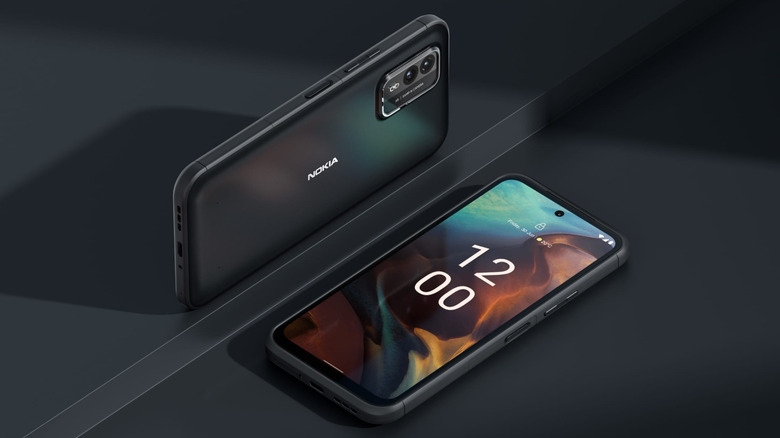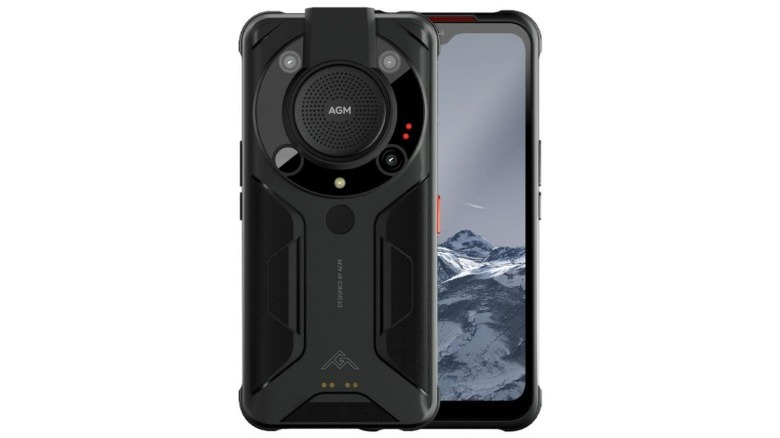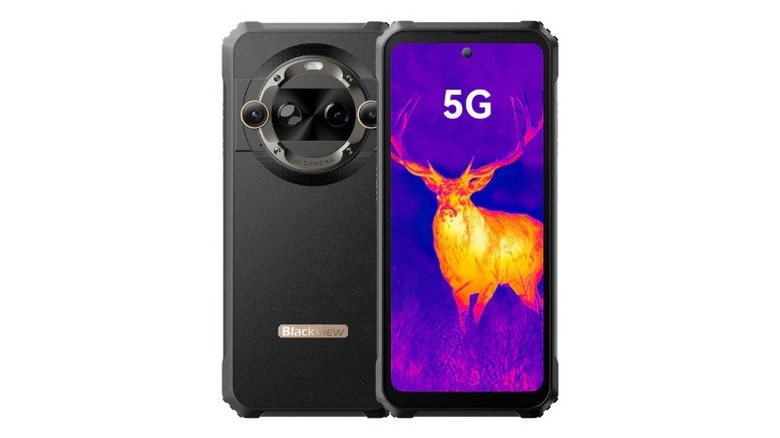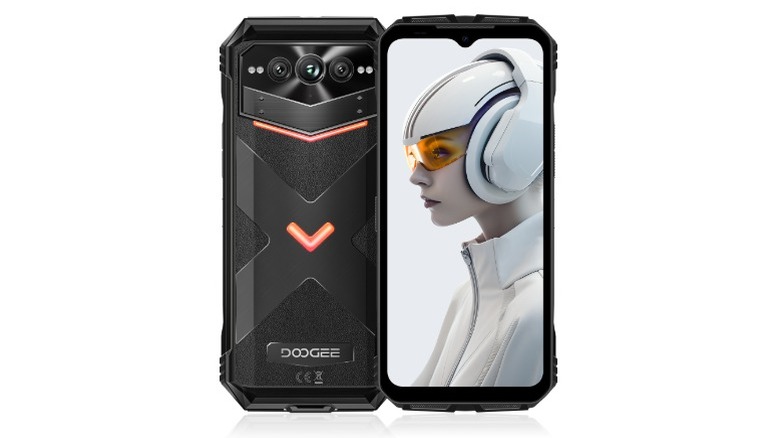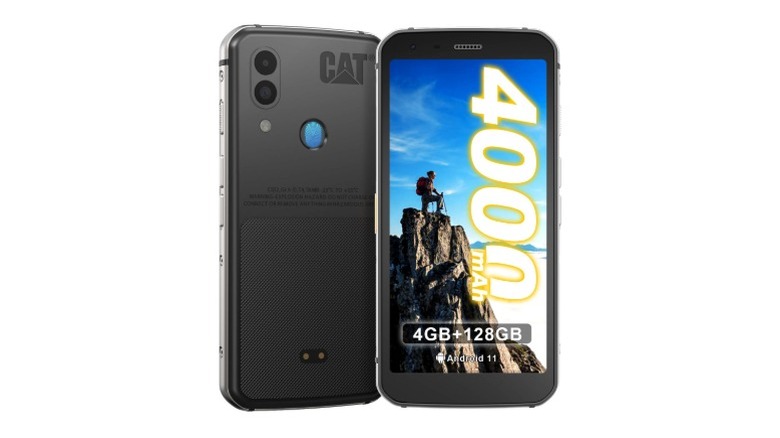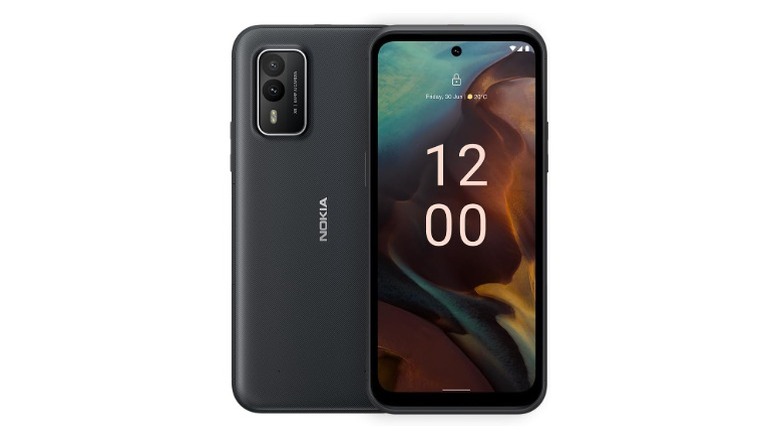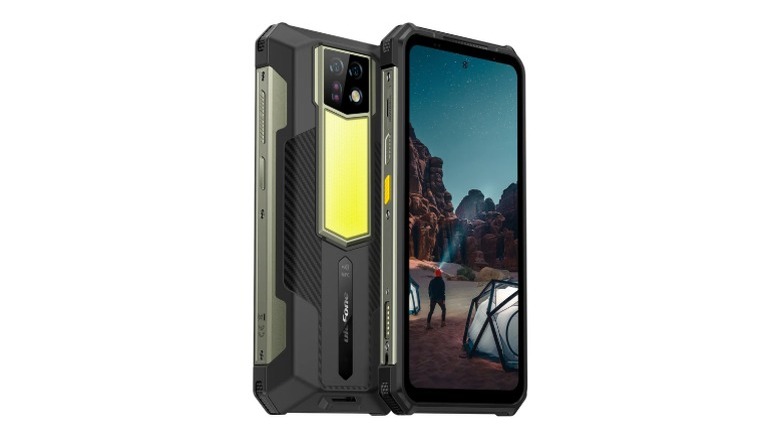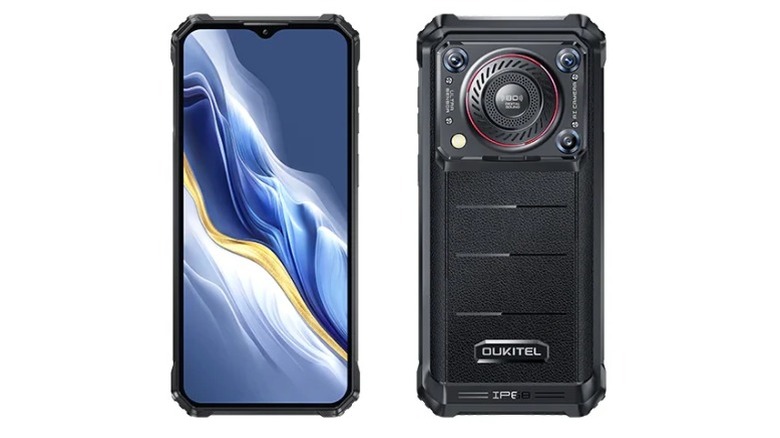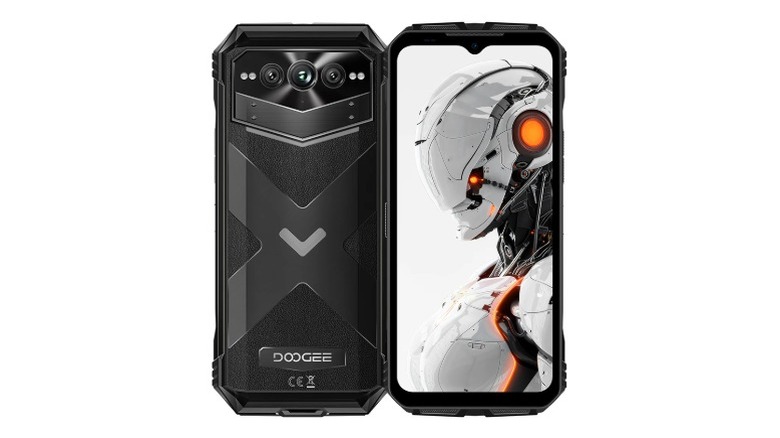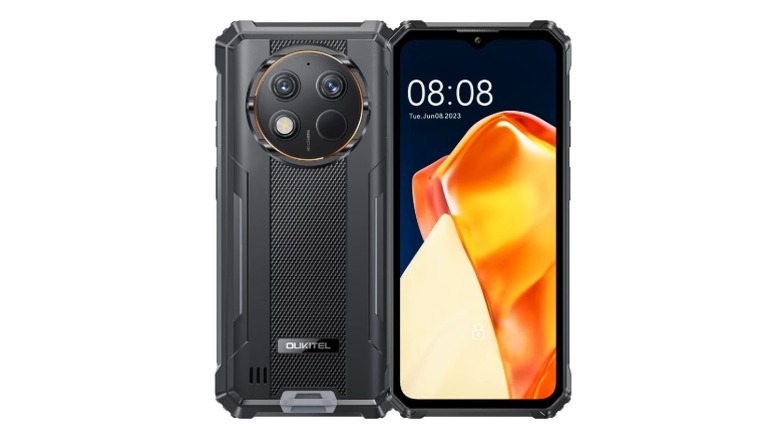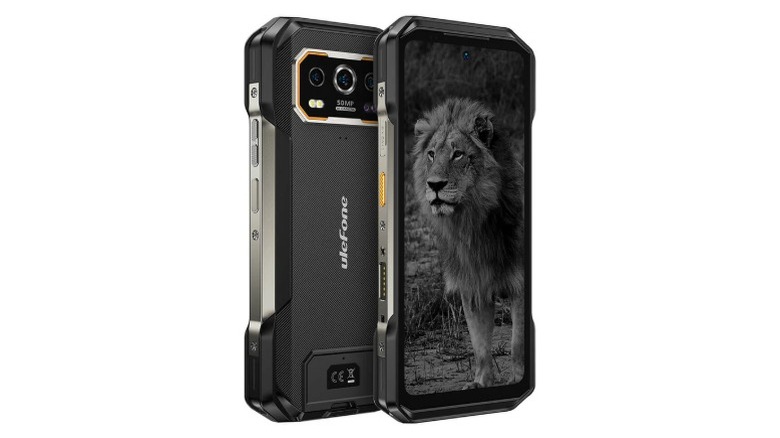10 Super Durable Smartphones That Promise To Be Nearly Indestructible
We may receive a commission on purchases made from links.
Today's mainstream smartphones are sleeker and more capable than ever, but they're not necessarily tougher. It's still worryingly easy to damage one by dropping, scratching, or submerging it in water, particularly for those of us who prefer to do without bulky phone cases. Some big-brand smartphones like the Google Pixel 9 offer IP68 resistance against dust and water ingress, but that still leaves them vulnerable to shock damage, scratches, and scuffs. That isn't enough for anyone who needs their smartphone to survive in tougher working environments.
Thankfully, there are plenty of smartphones out there that boast much more sturdy construction, with their makers claiming they can withstand common outdoor hazards like drops or water damage. These 10 examples offer some of the boldest claims on the market, promising to be virtually indestructible and, therefore, capable tools for outdoor enthusiasts, tradespeople, and explorers.
It's worth noting that these claimed capabilities are exactly that — they are manufacturer claims and have not been verified by SlashGear. This list simply aims to highlight some of the toughest models according to their respective makers and makes no guarantees that the claimed capabilities will match up to real-world testing.
AGM Glory Pro
Not everyone wants a smartphone that looks as rugged as it is, but anyone who wants to lean into the theme will appreciate the look of the AGM Glory Pro. It features thick rubber bumpers on each corner and a rear design that resembles a walkie-talkie, with four camera lenses arranged around a central speaker. According to the brand, that speaker can pump out up to 110dB, making phone calls easily detectable even in the noisiest operating environments. The phone is IP68 and IP69K rated against water and dust ingress and meets the MIL-STD-810H durability standard.
AGM claims that the Glory Pro can be dropped from heights of 1.5 meters — roughly five feet — onto concrete surfaces without damage and can operate in temperatures as low as -27°Celsius, around -16°Fahrenheit. Alongside its core smartphone capabilities, the phone also features a thermal imaging camera, capable of measuring the temperature of objects up to 16 feet away.
These capabilities sound impressive at first glance, but the AGM Glory Pro isn't without its drawbacks. The biggest is its price — it retails for $700 — and the second is that it only ships with Android 11. Another sticking point is that it's only compatible with T-Mobile in North America and not other leading networks. Those are some pretty major drawbacks, and so despite its durability claims, it's hard to see why buyers would opt for the Glory Pro over the other options on the market.
Blackview BL9000 Pro 5G
When it comes to operating in extreme temperatures, there are plenty of smartphones that — quite literally — can't stand the heat. The Blackview BL9000 Pro 5G promises to withstand air temperatures of up to 60°Celsius/140°Fahrenheit, one of the highest ratings on the market. Plus, it's decent for extremely cold temperatures, too, with a minimum operating temperature of -20°Celsius/-4°Fahrenheit. Add in the phone's IP68 and IP69K water and dust ingress ratings and the result is a device that can withstand even the toughest workplaces or outdoor environments. It's also certified to the MIL-STD-810H durability standard.
The company claims that the BL9000 Pro 5G can be dropped from heights of up to five meters or 16 feet without damage, and with a thick protective bumper encasing the screen, it certainly looks tough enough to live up to those claims. Nonetheless, the exterior isn't as outlandishly designed as some of its competitors, making it a more attractive option for those who want ultimate durability but don't want to stand out too much from the crowd. The phone runs Android 14 out of the box, but then you'd hope so, given that it retails for $800, putting it close to some popular Apple, Samsung, and Google models.
Doogee V Max Plus
Running out of battery is, for most smartphone users, at worst, a serious inconvenience. However, running out of battery while out in the wilderness is an altogether more serious issue and one that the Doogee V Max Plus aims to fix for good. Its giant 22,000 mAh battery is its biggest selling point, with the brand claiming it provides up to 130 hours of calls or music on a single charge. For context, the Samsung Galaxy S24 has a battery capacity of 4,000 mAh. The V Max Plus is also tough enough to withstand long jaunts into the wilderness, both meeting the MIL-STD-810H durability standard and boasting an IP69K rating against dust and water ingress.
It runs Android 14 and features several outdoor-oriented additional features, including a night vision camera and a power delivery function to allow it to act as a power bank for other devices in an emergency. Doogee only offers support for the T-Mobile network, although it can, in theory, run on other networks that use one of its supported bandwidths. Its talents make it stand out from the crowd, but it isn't cheap. It retails for $630, although it can frequently be found discounted.
CAT S62
Anyone looking for a rugged secondary smartphone for weekend adventures won't be able to justify spending hundreds of dollars on one. That's where smartphones like the CAT S62 come in: they're still tough but affordable — provided you can live with a few compromises. The phone meets the IP68 standard for resistance to water and dust, as well as the MIL-STD-810H durability standard. It also offers a 4,000mAh battery, comparable with many leading smartphones on the market today. Plus, it retails for only $170.
There is, of course, a catch. The S62 offers very little processing power by modern standards, and there's just 4GB of RAM on offer. It runs Android 11 Go out of the box, which means users won't benefit from the latest Android security updates and might have compatibility problems with some apps. The 12MP camera also lags behind the leading rugged phones, although that's inevitable at this price point. As a result, there are plenty of downsides to buying a CAT S62, although as a cheap, durable backup phone, it might still win over some cash-conscious buyers.
Nokia XR21
Given that the classic Nokia 3310 garnered a reputation as being one of the most unbreakable phones on the market, it seems very fitting that the brand still makes rugged smartphones today. Whether its new breed of toughened phones are quite as indestructible as the originals is up for debate, but either way, modern models like the Nokia XR21 offer impressive durability stats.
According to Nokia, the XR21 can withstand being dropped onto hard surfaces from up to 1.8 meters (six feet), can operate in temperatures ranging from -20°Celsius/-4°Fahrenheit to 55°Celsius/131°Fahrenheit, and meets the MIL-STD-810H standard for durability. It can also withstand prolonged, significant exposure to dust and water since it's IP69K rated.
It runs Android 12 out of the box and packs six gigabytes of RAM — not enough to match the performance of today's most popular smartphones, but plenty for most everyday uses. Unlike many of its rivals, the XR21 is also compatible with most U.S. networks, including AT&T and T-Mobile. However, it is not compatible with Verizon.
Ulefone Armor 24
A flashlight is an essential piece of equipment for all kinds of outdoor activities, and there are plenty of powerful, military-spec flashlights on the market to choose from. However, there's always a risk that you end up dropping, losing, or damaging your primary flashlight, in which case a backup option might come in handy. The Ulefone Armor 24 offers a built-in flashlight that's a step above the average phone light, with 1,000 lumens of brightness for serious lighting power. It also functions in all weather since the phone meets the MIL-STD-810H standard and the IP68 and IP69K standards for resisting dust and water ingress.
It's resistant to being dropped from heights of up to 1.5 meters (five feet) and features a supersized 22,000 mAh battery, much like the Doogee V Max Plus. At a retail price of $370 it's also significantly cheaper than the Doogee, and it runs Android 14 to boot. The Armor 24 also packs two SIM card slots, so frequent international travelers can switch between carriers on demand.
However, picking carriers will require some extra effort, as only certain networks are supported. T-Mobile is the biggest supported U.S. carrier, but most other major carriers, including AT&T and Cricket, are not supported. There's also no 5G connectivity, and at a weight of almost 1.5 pounds, the phone is among the heaviest of its kind.
Oukitel WP36
One of the more affordable offerings in the rugged smartphone market is the Oukitel WP36, which retails for $200 but packs Android 13 and durability ratings on par with its pricier rivals. The brand's IP68 and IP69K are certified against dust and water ingress and meet the MIL-STD-810H durability standard. Its 10,600 mAh battery is particularly large given the phone's budget price, and its 128dB speaker ensures that calls and notifications will always be heard. Like many of its rivals with similarly large batteries, the phone can also be used to charge other small devices in an emergency, although a separately sold cable will be required to do so.
A relatively low-resolution screen (720p) and a 13MP main camera mean that there's no mistaking the fact that this is a budget phone, although its plasticky looks give that away from just a glance anyway. Still, based on its claimed durability ratings, the WP36 offers a competitive package for its price, even with its performance and visual shortcomings.
Doogee V Max Pro
Much like its V Max Plus sibling, the Doogee V Max Pro packs a huge 22,000 mAh battery plus IP68, IP69K, and MIL-STD-810H certification. It can also charge other small devices such as cameras, tablets, or other smartphones if needed. There's no need to worry about outdated software here since the V Max Pro features Android 14 and thus benefits from the latest security updates. Dual SIM slots are available to allow users to swap between multiple networks while traveling.
As standard, the Doogee features 512 gigabytes of internal storage, but with an appropriately capacious SD card, that figure can be increased to a whopping two terabytes. Its battery and generally chunky design both have an effect on its weight, with the phone weighing around 1.2 pounds. That's not quite as much as the exceptionally heavy Ulefone Armor 24, but still enough that buyers used to lighter, more compact phones will immediately notice the difference. The V Max Pro is slightly cheaper than its Doogee sibling, the V Max Plus, retailing for $600.
Oukitel G1
The Oukitel G1 is similar to the brand's WP36 model and retails for the same price of $200. However, it runs Android 14 out of the box and looks a little more conventional than the latter. Instead of the unusual rear speaker design of the WP36, the G1 features dual camera lenses, a flashlight, and a fingerprint sensor encased in a cluster. The plastic casing around the phone remains much the same, but it helps contribute to its IP68, IP69K, and MIL-STD-810H certifications.
While a number of cheaper rugged smartphones offer limited claims about their extreme temperature performance, the G1 claims a safe operating range of between -20°Celsius/-4°Fahrenheit and 55°Celsius/131°Fahrenheit. The 10,600 mAh is not quite as large as some pricier rivals, but still significantly larger than many leading smartphones. As a result, Oukitel claims that the phone can last up to 1,000 hours on standby and deliver 60 hours of call time on a single charge.
Ulefone Armor 27 Pro
It's safe to say that most buyers won't need a phone that operates in extreme cold and extreme hot temperatures. The Ulefone Armor 27 Pro might be worth a look for the few that do. The company says that the phone is rated for operation between -30°Celsius/-22°Fahrenheit to 55°Celsius/131°Fahrenheit, giving it one of the widest temperature operating ranges on the market. It's tough too, with IP68 and IP69K against dust and water ingress and a MIL-STD-810H certification for overall durability.
Ulefone borrows its camera components from Samsung, with a 32MP GD1 front-facing camera and a 50MP GD1 rear camera. The 10,600 mAh battery offers several days' worth of usage between charges, and the Android 14 OS ensures an up-to-date software experience. Like many global-market phones, the Armor 27 Pro isn't compatible with all U.S. providers, and leading choices like AT&T are not supported. The $480 retail price isn't surprising given the hardware that's on offer, but the phone's exterior design leaves a little to be desired given its mid-range price. However, Get past its looks, and the Ulefone offers both toughness and everyday usability for buyers willing to stump up the cash.
